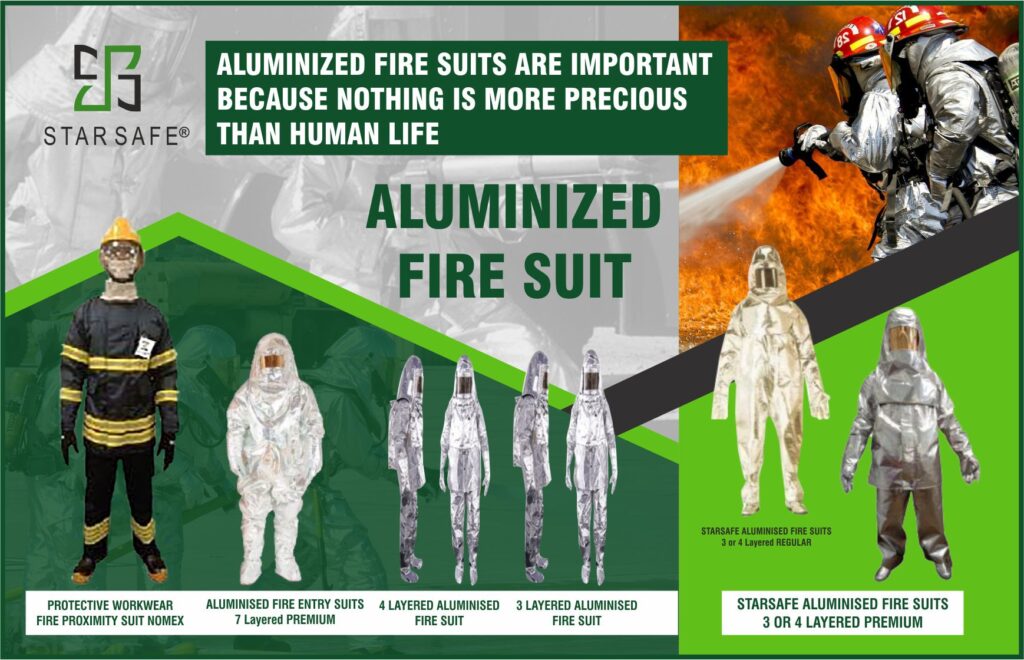
Fire safety PPE has evolved dramatically. With time, the nature of fire accidents and risk assessment has also transformed. Fire fighters particularly, need to change tactics based on the nature of the beast and ‘one size fits all’ fire safety wear will not work. Since nothing is more precious than human life, the advent of the Aluminized Fire Suit has taken PPE to the next level. A typical suit would normally consist of a hood with visor, a sit in jacket and trouser combination boot and gloves. The suit would be interwoven with minimum three layers of fabric (inner, middle and outer) highly fire and heat resistant and coated lined externally with layer of aluminized reflector.
The difference between a traditional fire entry suit and a specialized one as above, is that the former provides ambient heat protection up to ≈500 °F (260 °C), while the latter provide much higher degrees of protection, sometimes up to ≈2,000 °F (1,093 °C) – ideal for entry into extreme heat and situations requiring protection from total flame engulfment.
Why is Aluminization important? One would be inclined to ask. Fire safety clothing is aluminized to protect the body, not just from the flames but also from potential radiant heat, molten metal, and welding spark hazards. Fire PPE and Molten Metal PPE provides protection against molten metal splash and spatter and also reflects a large percentage of radiant heat.
Proximity Fire Fighting is a specialized fire fighting operation requiring not just special skills, but specialized wear as well. Operations in proximity fire fighting can include the activities of rescue, fire suppression, and property conservation in situations involving fires producing high levels of radiant heat as well as conductive and convective heat. Aluminized Fire Proximity suit normally has an outer layer of Aluminized Fiberglass or Aluminized Kevlar Fabric and is widely used for Fire Proximity Rescue or in high temperature/high risk fire incidents in places such as Molten Metal Foundries, Power Plants, Steel Plants, Furnaces, Casting Houses, explosive or cracker manufacturing storages or factories and Glass Industries.
Coming to specifics, there are three primary materials used in proximity safety wear ensembles viz. aluminized glass, Nomex and Rayon. Aluminized glass combines the reflectivity of an aluminized outer surface with glass fabric. Glass fabric neither burns nor supports combustion, and offers a combination of properties from high strength to fire resistance.
According to National Fire Protection Association Standard NFPA 1971 “Standard on Protective Ensembles for Structural Fire Fighting and Proximity Fire Fighting 2007 edition” examples of fires that commonly produce high levels of radiant heat, as well as convective and conductive heat are bulk flammable liquid fires, bulk flammable gas fires, bulk flammable metal fires, and aircraft fires. It is the ability to reflect high levels of radiant heat that distinguishes Proximity from Structural fire fighting ensembles.
A quick market search places the costing of professional high grade Aluminized fire suits at Indian rupees 13 to 14 thousand upwards but some grades go up to 50 to 60 thousand. It is therefore important that the buyer reads the fine print and matches it to his or her specific requirements based on risk assessment.
